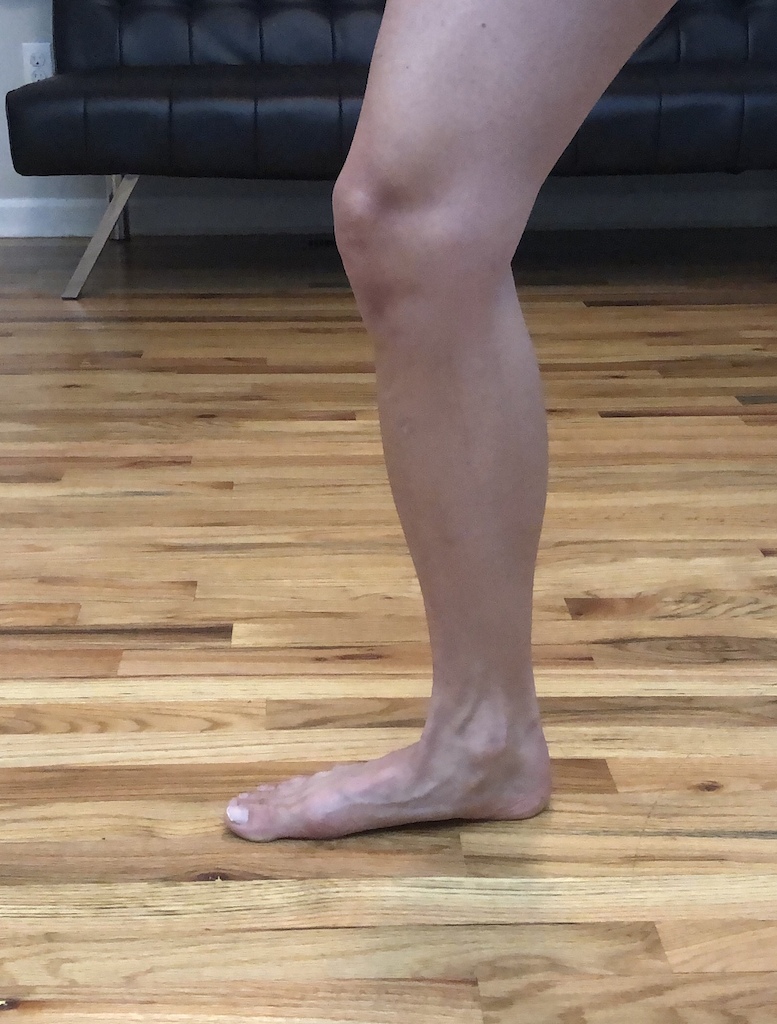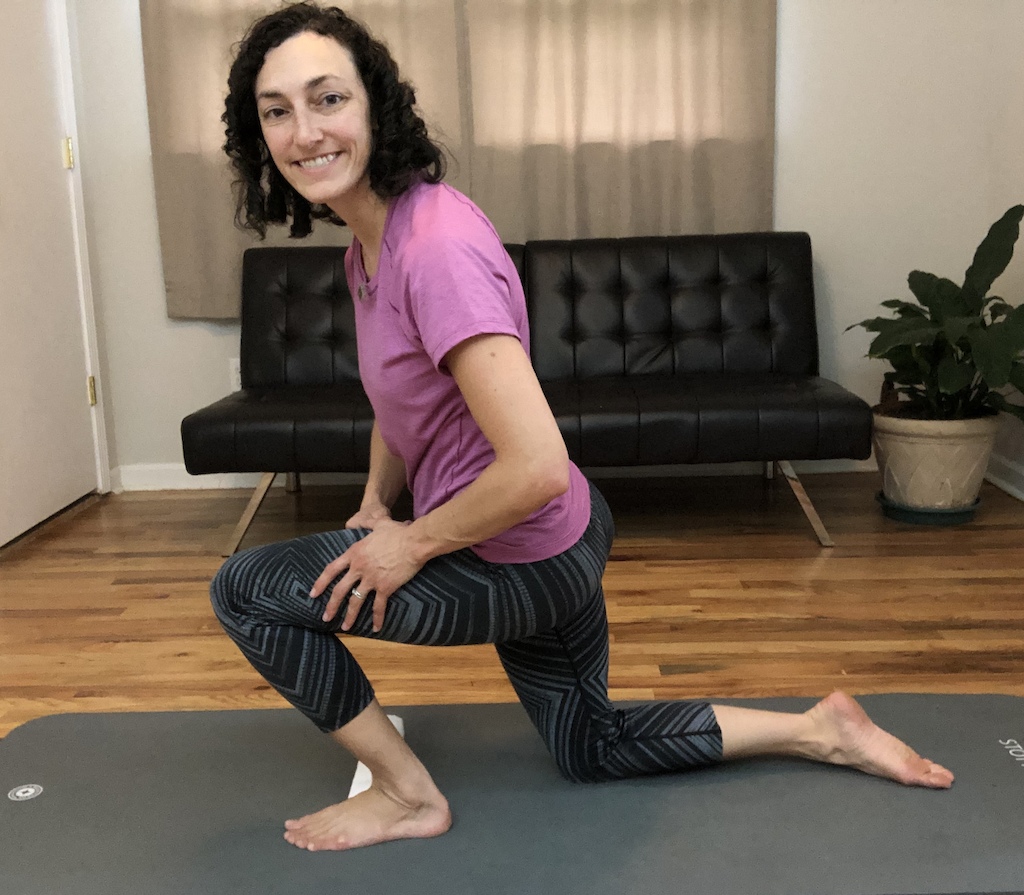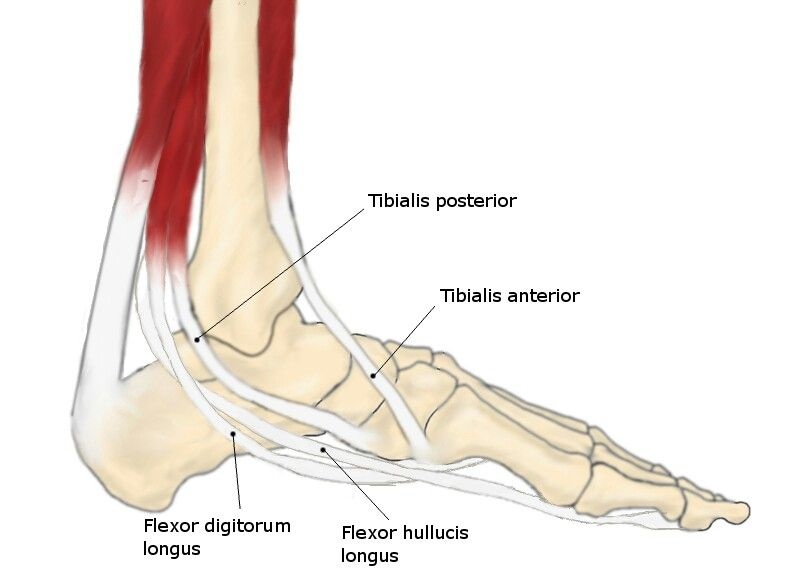4 Exercises to Help with Hip, Knee & Heel Pain from Flat Feet
When you look at a house that has cracks in the walls, where do you look first to fix the issue???
The Foundation! Or for your body… your FEET
From working with mtn bikers, through The Ride Life, and being one myself, I have seen the impact feet can have on riders and their bodies. It is one of the points of contact with the bike and can play a big role!
**This article isn't going to talk about shoes, pedals, or type of attachment (platform vs clipless).**
Having a flat foot (overly pronated foot) is basically saying that your arch is caving in… Then this causes your knee to turn in… which then causes your hip to turn in … and pelvis stress.
Knee turning in: Means that many repetitions on the bike can cause knee pain and a lack of motor control of the leg
Hip Turning in: Means that you’re a placing your external rotators and abductors (aka your gluts) on stretch and can decrease their function
Pelvis stress: Means that your back can become the next stress point.
These are all cracks in your walls of your house. Now you know that after you fix the foundation of a house you may have to fix the walls… aka…you may need to do other stretching and strengthening for the knees, hips, and low back to completely solve your issues in these regions.
Now… there is a reason why we have the ability to flatten our feet. This is our shock absorber to be able to walk and to run on uneven ground. But if we can’t come back out of it and regain our arch, we are not ready for the next impact and we are leaving our joints in a compromised position.
Now that you understand why flat feet can cause major issues… you ask, why are my feet flat? I’m going to go over some broad base ideas and give you an exercise to combat each main point. This isn’t an all-inclusive list, but a broad look to help most people.
Couple different reasons why you could have flat feet…
4. Very Flexible Feet: You could have more flexibility in your foot or could have stretched these out causing your foot to lose structure and support. Think of ligaments like straps that connect bone to bone… sometimes they break and some people have more bungie cords than straps. Therefore, these straps that should be supporting the arch are not and the foot muscles need to take up the slack or you need some outside support as well depending on the severity of the lack of support.
On a side note: Orthotics, Wedges…
There are many different opinions on this area.
Here are some reasons why an orthotic or support/wedge would be indicated:
- Your foot has a deformity/structural issue or pain (needs to be unloaded)
- You have a very flexible foot, you need some external support
- Your foot/ankle muscle’s endurance can’t keep up with your rides/daily life
Getting a wedge or an orthotic can help with foot soreness and can help with other issues up the chain (knees, hips, and back), but it can also cause more foot/ankle weakness. This can lead to less balance as a whole and an increased dependence on the orthotic.
When people get the arch support, the foot/ankle muscles don’t have to work as much, therefore, if you did need the arch support you need to keep strengthening your muscles!! Also, if your arch support is too stiff then you will lose the ability for your foot to shock absorb. On the other hand, if it is too soft, then you might not be giving yourself enough support.
Check out the Exercises for your Arch
Exercise 1: ½ Kneeling Ankle Stretch
Objective
- To test ankle movement and to then stretch ankle movement
Perform:
- Daily to loosen up ankle and decrease stress on arch
- Do 20 reps 1 sets
Things to Note:
- Place towel roll under arch for support
- Do not hold, pulse in and out of movement
- If it is stretching more the Achilles tendon do a wall calf stretch with towel arch support
Exercise 2: Pen Cap or Towel Grab
Objective
- To strengthen the muscles that are in the foot to support the arch of the foot
Perform:
- Daily
- Do 20-40 reps 1-3 sets pending on physical endurance
Things to Note:
- Stop and rest if foot is cramping, keeping heel down
Exercise 3: Ankle Arch Muscles
Objective
- To strengthen the muscles that come from the calf to support the arch of the foot
Perform:
- Daily
- Do 20-40 reps 2-3 sets
Things to Note:
- Stop and rest if your calf/foot starts the cramp
- Should feel muscles in your inner calf working or foot
- Heel stays on the ground
Exercise 4: Loaded Arch Support/Balance
Objective
- To understand how to implement the muscles for the arch support when standing
Perform:
- Daily
- Do 20-40 reps 1-3 sets pending on physical endurance
Things to Note:
- Stop and rest if foot is cramping
- Big toe base stays on the ground
About the Author:
Liz Koch, PT, DPT is a physical therapist that knows exactly what it is like to have pain. She has been to many PTs over her life, which directed her to becoming one. She has been a mountain biker since she was a kid and has recently opened up her own clinic in Western North Carolina, Blue Ridge BioMechanics. She wants to share knowledge so you don’t have to be in pain when riding and you don’t have to stop riding to get out of pain. She has focused this mission to Rad Mountain Biking Ladies on Facebook and through her online business, The Ride Life.
Let her know if you have questions.
*If you have pain please consult with a doctor or physical therapist for further evaluation, Liz Koch and companies are without liability if you injure yourself while performing these exercises*
The Foundation! Or for your body… your FEET
From working with mtn bikers, through The Ride Life, and being one myself, I have seen the impact feet can have on riders and their bodies. It is one of the points of contact with the bike and can play a big role!
**This article isn't going to talk about shoes, pedals, or type of attachment (platform vs clipless).**
Having a flat foot (overly pronated foot) is basically saying that your arch is caving in… Then this causes your knee to turn in… which then causes your hip to turn in … and pelvis stress.
Knee turning in: Means that many repetitions on the bike can cause knee pain and a lack of motor control of the leg
Hip Turning in: Means that you’re a placing your external rotators and abductors (aka your gluts) on stretch and can decrease their function
Pelvis stress: Means that your back can become the next stress point.
These are all cracks in your walls of your house. Now you know that after you fix the foundation of a house you may have to fix the walls… aka…you may need to do other stretching and strengthening for the knees, hips, and low back to completely solve your issues in these regions.
Now… there is a reason why we have the ability to flatten our feet. This is our shock absorber to be able to walk and to run on uneven ground. But if we can’t come back out of it and regain our arch, we are not ready for the next impact and we are leaving our joints in a compromised position.
Now that you understand why flat feet can cause major issues… you ask, why are my feet flat? I’m going to go over some broad base ideas and give you an exercise to combat each main point. This isn’t an all-inclusive list, but a broad look to help most people.
Couple different reasons why you could have flat feet…
4. Very Flexible Feet: You could have more flexibility in your foot or could have stretched these out causing your foot to lose structure and support. Think of ligaments like straps that connect bone to bone… sometimes they break and some people have more bungie cords than straps. Therefore, these straps that should be supporting the arch are not and the foot muscles need to take up the slack or you need some outside support as well depending on the severity of the lack of support.
On a side note: Orthotics, Wedges…
There are many different opinions on this area.
Here are some reasons why an orthotic or support/wedge would be indicated:
- Your foot has a deformity/structural issue or pain (needs to be unloaded)
- You have a very flexible foot, you need some external support
- Your foot/ankle muscle’s endurance can’t keep up with your rides/daily life
Getting a wedge or an orthotic can help with foot soreness and can help with other issues up the chain (knees, hips, and back), but it can also cause more foot/ankle weakness. This can lead to less balance as a whole and an increased dependence on the orthotic.
When people get the arch support, the foot/ankle muscles don’t have to work as much, therefore, if you did need the arch support you need to keep strengthening your muscles!! Also, if your arch support is too stiff then you will lose the ability for your foot to shock absorb. On the other hand, if it is too soft, then you might not be giving yourself enough support.
Check out the Exercises for your Arch
Exercise 1: ½ Kneeling Ankle Stretch
Objective
- To test ankle movement and to then stretch ankle movement
Perform:
- Daily to loosen up ankle and decrease stress on arch
- Do 20 reps 1 sets
Things to Note:
- Place towel roll under arch for support
- Do not hold, pulse in and out of movement
- If it is stretching more the Achilles tendon do a wall calf stretch with towel arch support
Exercise 2: Pen Cap or Towel Grab
Objective
- To strengthen the muscles that are in the foot to support the arch of the foot
Perform:
- Daily
- Do 20-40 reps 1-3 sets pending on physical endurance
Things to Note:
- Stop and rest if foot is cramping, keeping heel down
Exercise 3: Ankle Arch Muscles
Objective
- To strengthen the muscles that come from the calf to support the arch of the foot
Perform:
- Daily
- Do 20-40 reps 2-3 sets
Things to Note:
- Stop and rest if your calf/foot starts the cramp
- Should feel muscles in your inner calf working or foot
- Heel stays on the ground
Exercise 4: Loaded Arch Support/Balance
Objective
- To understand how to implement the muscles for the arch support when standing
Perform:
- Daily
- Do 20-40 reps 1-3 sets pending on physical endurance
Things to Note:
- Stop and rest if foot is cramping
- Big toe base stays on the ground
About the Author:
Liz Koch, PT, DPT is a physical therapist that knows exactly what it is like to have pain. She has been to many PTs over her life, which directed her to becoming one. She has been a mountain biker since she was a kid and has recently opened up her own clinic in Western North Carolina, Blue Ridge BioMechanics. She wants to share knowledge so you don’t have to be in pain when riding and you don’t have to stop riding to get out of pain. She has focused this mission to Rad Mountain Biking Ladies on Facebook and through her online business, The Ride Life.
Let her know if you have questions.
*If you have pain please consult with a doctor or physical therapist for further evaluation, Liz Koch and companies are without liability if you injure yourself while performing these exercises*
Author Info:
Must Read This Week
Sign Up for the Pinkbike Newsletter - All the Biggest, Most Interesting Stories in your Inbox
PB Newsletter Signup








But to the point of the article, it makes it seem like you NEED to have an unmoving arch and having a low arch is going to cause you problems regardless, which it won't. "if you did need the arch support you need to keep strengthening your muscles" THIS SENTENCE IS NOT TRUE FOR EVERYTHING OR EVERYONE! There is SO MUCH variation in foot shapes and morphology before you even get to the how it interacts with the rest of your body. Also how your foot interacts with non flexing footwear (like a stiff clipless shoe or ski boot), versus a running shoe or sandal is a very different things. The rigid footbeds often used in ski boots are bad to put in flexible footwear. If you naturally have a static flat foot that is fine, your foot needs are different than people like me who have a dynamic high arch.
Source: I work in performance footwear working with people who've been developing and testing olympic level footwear for decades.
It is def hard with a negative arch... or a very flat foot to get a shoe that supports you how you need. When ever someone has a significantly low arch, you don’t want to have a huge support. You foot won’t handle it well at all. I would look for more of a neutral (no support in the shoe) and then add in an orthotic or insert that fits the type of support that you can handle/need. I would also recommend strengthening your hips (gluts) to also support your ankles and knees. You can check out my YouTube channel for some good exercises.
Stand feet together.
Relax
Tense glutes hard.
Try this a few times and notice how your feet naturally fork an arch.
Strong / properly functioning glutes can go a long way to addressing collapsed arches.
Combine this with trying to grip the floor with your feet.
to my right knee, and recently inured my back- I suspect my SI joint could be compromised. Are SI joint injuries common in the patient types that you describe? Thank you Liz!
They can be but it is more likely that you need to work on some core strengthening to help with both back and SIJ issues. If you are more flexible as a whole they helping your feet can help but def will need some core strength as well.
I will try and see if it relieves the pain a bit! That would be great!
I stretch a lot and I'm generally pretty fit and strong, but over a 3-4 minute rocky downhill foot pain is the limiting factor for me. Ankle mobility is not an issue, although my calves and hamstrings are basically always tense if I haven't stretched then in the last 10 minutes.
I have cheap arch support inserts I got on Amazon and they help a bit but it still hurts.
Thank you so much for posting these excellent videos and exercises! I recently purchased a foam roller and have doing many of your other stretches and exercises as well! Please keep this stuff coming. It's very helpful!